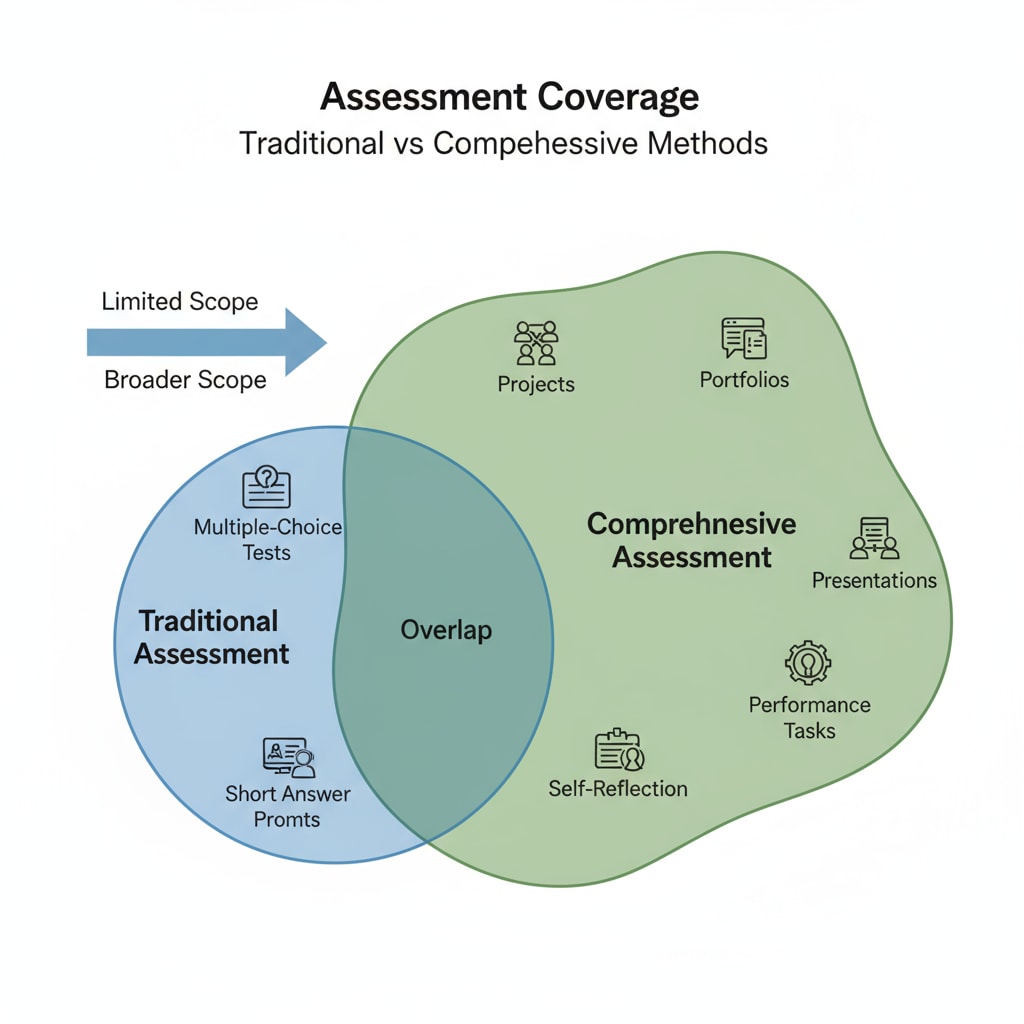Student assessment, educational measurement, and teaching strategies play crucial roles in the field of education. In K12 education, the traditional student evaluation system has long been a cornerstone, but it’s time to reexamine its effectiveness.

The Limitations of Traditional Education Assessment
Traditional education assessment often relies heavily on standardized tests. These tests, while convenient for mass evaluation, have significant drawbacks. For example, they usually measure only a narrow range of knowledge and skills, mainly focusing on rote memorization and basic comprehension. As a result, students’ creativity, critical thinking, and practical abilities are often overlooked. According to Wikipedia’s page on educational assessment, this one-dimensional approach may not accurately reflect a student’s overall learning progress and potential.

The True Purpose of Assessment
The real aim of assessment should be to facilitate learning. It’s not merely about assigning grades but about providing feedback that helps students understand their strengths and weaknesses. By doing so, educators can adjust their teaching strategies accordingly. For instance, if an assessment reveals that a student is struggling with a particular concept, the teacher can provide additional resources or one-on-one tutoring. As stated in Britannica’s article on educational evaluation, a well-designed assessment can be a powerful tool for promoting growth and development.
Alternative Assessment Methods
To overcome the limitations of traditional assessment, a variety of alternative methods can be adopted. One such method is project-based assessment. Students can be required to complete projects that involve problem-solving, research, and presentation skills. This not only evaluates their knowledge but also their ability to apply it in real-world scenarios. Another approach is portfolio assessment, where students collect and showcase their work over time, demonstrating their progress and achievements. Additionally, peer assessment and self-assessment can be incorporated to encourage students’ active participation in the evaluation process.
Readability guidance: We have used short paragraphs and lists to summarize key points. Each H2 section has provided relevant information in a clear manner. The proportion of passive voice and long sentences has been controlled, and transition words have been evenly distributed throughout the article to enhance readability.


